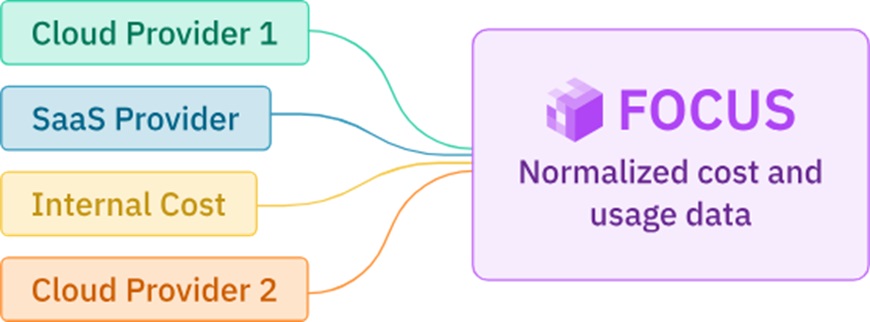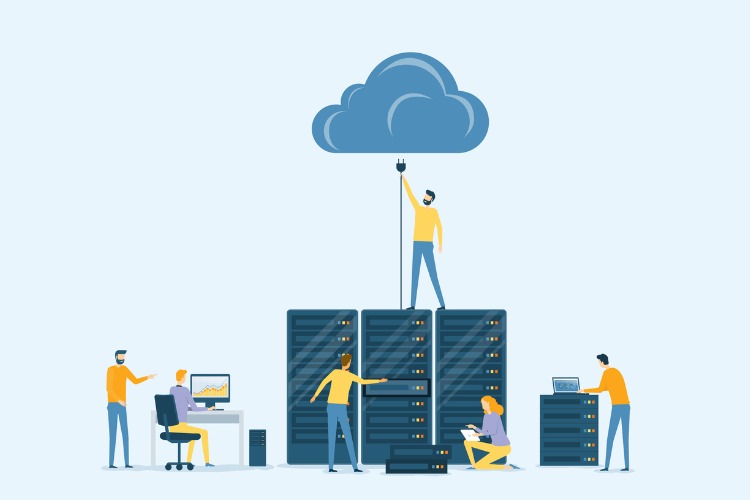10 Key strategies for Enhanced Cloud Cost Visibility and Control
As your cloud usage increases, so will the complexity and length of your cloud invoice. It is crucial for organizations to possess the skill of deciphering such invoices, extracting essential data, and making informed decisions to maximize the business value derived from cloud.
Cloud service providers tend to overwhelm users with extensive metadata, often comprising hundreds or thousands of lines for each consumed service. While this metadata offers valuable insights into service types, resource IDs, and more, the sheer volume can shake-down even veterans to cloud computing. In some instances, initial invoices may span approximately 190 pages, with a total cost as low as $15-$20. Navigating through such detailed metadata is impractical for FinOps teams seeking to comprehend cloud consumption and associated rates efficiently.

Cloud providers even offer a plethora of cloud cost visibility platforms and dashboards to see your cloud bill in more granularity. These tools will generally provide you with a basic way to look at your data. These tools are always advancing and becoming more flexible and detailed.
You should make the most of such tools, but also, know that the thing that stays constant is your strategy. Define what aspects to focus on and how to leverage the data obtained through these tools to enhance cloud cost visibility and maintain control.
Achieving cloud cost visibility is not merely a matter of financial management; it directly impacts overall business strategy. Lack of visibility can lead to budget overruns, making it challenging for you to allocate resources efficiently and prioritize critical projects.
So, let us discuss in detail 10 key strategies to enhance your cloud cost visibility and improve overall control:
- Compliance with the FOCUS™
Ensuring your cloud bill aligns with the FOCUS™ (FinOps Cost and Usage Specification) is paramount. Developed by the FinOps Foundation, FOCUS™ brings consistency and standardization to cloud cost data, encompassing cloud providers, SaaS providers, and internal costs. This framework facilitates a clearer visualization of the value derived from cloud services. By transforming intricate cloud billing data into a simplified and standardized schema, FOCUS™ provides a unified perspective on cloud expenditures. This, in turn, empowers you to make more informed and structured decisions regarding allocation, chargeback, budgeting, cloud cost forecasting, and other FinOps capabilities.

- Tagging and Resource Organization:
Implementing a robust tagging strategy for your cloud resources is fundamental. By tagging resources with metadata such as department, project, environment, and owner, you establish a clear organizational structure. Additionally, utilizing resource groups and folders enhances the logical organization of resources, making cloud cost tracking an easy process.
- Cost Allocation and Showback/Chargeback:
Allocating costs to specific departments or teams based on resource usage is essential for financial transparency. Implementing showback or chargeback mechanisms fosters awareness among teams regarding their consumption patterns. Providing detailed cost reports and dashboards further facilitates informed decision-making among stakeholders.
- Budgeting and Alerts:
Setting up budget alerts to notify you when spending exceeds predefined thresholds is a proactive measure. Establishing budget controls that automatically limit resource provisioning when budgets are exceeded ensures financial discipline. Regularly reviewing and adjusting budgets based on evolving business needs is an ongoing process for effective cost management.
- Rightsizing and Resource Optimization:
Continuously monitoring resource utilization and identifying underutilized or overprovisioned instances is critical. Rightsizing instances based on performance metrics and workload requirements helps achieve optimal resource utilization. Using auto-scaling to dynamically adjust resources based on demand ensures efficient resource management allowing cloud cost visibility and control.
- Cloud Cost Analytics Tools:
Implementing cloud cost analytics tools is crucial for gaining deeper insights into your spending patterns. Whether through third-party cloud cost visibility platforms like CloudKeeper Lens or native cloud provider services, these tools enable detailed cost analysis. Utilizing historical data to identify trends and forecast future costs enhances strategic decision-making in cloud cost optimization.
- Policy Automation and Governance:
Implementing policies and governance frameworks to enforce cost control measures is essential. By automating policies for resource termination, handling idle resources, and enforcing tagging standards, organizations can maintain a consistent and disciplined approach to cost management. Regularly reviewing and updating governance policies ensures relevance and effectiveness.
- Cloud Service Optimization:
Evaluating and comparing the costs of different cloud services is a strategic approach. Choosing the most cost-effective options, exploring managed services, and considering serverless architectures help reduce your operational overhead. Leveraging native cloud provider tools for cost optimization recommendations further enhances efficiency.
- Employee Training and Awareness:
Providing training to employees on cloud cost management best practices is a proactive step. Fostering a culture of cost consciousness and accountability among teams encourages responsible resource usage. Creating awareness among users to report unused or underutilized resources contributes to overall cloud cost visibility & efficiency.
- Continuous Monitoring and Review:
Establishing a regular cadence for reviewing and optimizing your cloud costs should be an ongoing process. Monitoring changes in workload patterns and adjusting resources accordingly ensures adaptability to evolving needs. Staying informed about new features and pricing changes from cloud service providers is vital for making informed decisions in the ever-evolving cloud landscape.
By implementing these cloud cost visibility strategies, you can align your cloud spending with strategic objectives, allocate resources judiciously, and ensure that the benefits of cloud adoption are realized without compromising financial stability. By implementing informed decision-making practices, you'll not only optimize costs but also ensure that the advantages of cloud adoption contribute seamlessly to your overall business success.

